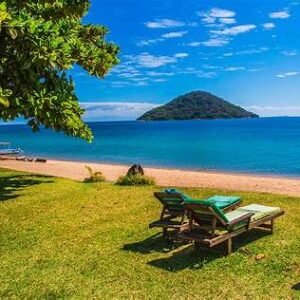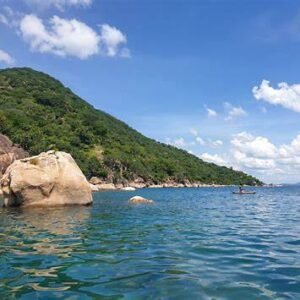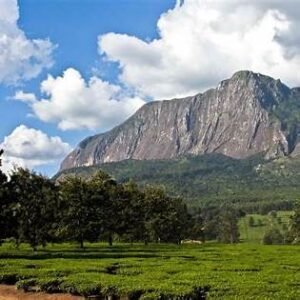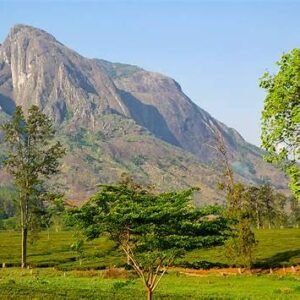



Malawi is often described as Africa’s best-kept secret — a land of shimmering lakes, remote wilderness, and warm, welcoming communities. Among the best places to visit in Malawi are its vast, translucent freshwater expanses, its rejuvenated wildlife reserves, and its richly layered cultural landscapes. In 2025, the country stands at a crossroads: newly expanded national parks, increasing conservation success, and more comfortable infrastructure are opening doors to experiences long reserved for more famous African destinations. Yet even now, Malawi retains its off-the-beaten-path charm: fewer crowds, more intimacy with nature, and real encounters with local life.
This article leads you through Malawi’s top destinations — from Lake Malawi’s clear waters and underwater biodiversity to the remote plateaus and forests of national parks, and into the heart of its living cultures. Through narrative storytelling and factual grounding, you’ll gain both inspiration and practical insight for travel, research, or deeper study.
A Brief Orientation: Malawi’s Geography, People, and Travel Context
Before delving into specific places, it helps to understand Malawi as a country of contrasts — landlocked but dominated by water, buffered by mountains, rich in biodiversity but facing economic challenges, with deep traditions alive in everyday life.
Geography and Regions
Malawi lies in southeastern Africa, bordered by Zambia to the west, Tanzania to the north and northeast, and Mozambique surrounding it on the east, south, and southwest. Although small in area relative to many African nations, Malawi packs considerable geographic variety. The eastern and central parts are dominated by the Great Rift Valley escarpments and highlands; much of the western interior is rolling plateau or woodland; and Lake Malawi occupies a large slice of the eastern border. Malawi Tourism+2Trade.gov+2
Lake Malawi (formerly Lake Nyasa) is a defining feature: approximately 585 km long north to south and up to 80 km across, it is among Africa’s largest lakes and is sometimes called an “inland sea.” Malawi Tourism+4A Luxury Travel Blog+4Trade.gov+4
The Shire River flows out of Lake Malawi toward the south, carving the Lower Shire Valley and ultimately joining the Zambezi system. A Luxury Travel Blog+3Malawi Tourism+3Shire Valley+3
In the north, the Nyika Plateau is a sweeping highland of grasslands and forested ravines. Wikipedia+2A Luxury Travel Blog+2
To the south, Mount Mulanje towers as the highest massif, with deep ravines and dramatic geology. Go2Africa+2A Luxury Travel Blog+2
Biodiversity, Wildlife & Conservation in 2025
Malawi’s wildlife sector has seen a renaissance over the past decade, thanks to concerted conservation efforts, anti-poaching initiatives, restocking programs, and private sector investment. Responsible Vacation+3Malawi Tourism+3Malawi Tourism+3
While Malawi was historically less known than neighboring countries for big game, today several parks host the “Big 5” (lion, elephant, buffalo, leopard, and rhinoceros in some cases) or are in the process of building toward that status. Malawi Tourism+2Malawi Tourism+2
Birdlife is a particular strength: over 650 species have been recorded, many specific to Malawi’s varied habitats (wetlands, montane forest, lake shore, riparian zones). Responsible Vacation+3Malawi Tourism+3A Luxury Travel Blog+3
Underwater, Lake Malawi is extraordinary: it supports around 1,000 species of fish, most of which are cichlids endemic to the lake. This makes its waters among the richest freshwater habitats on Earth. A Luxury Travel Blog+3Malawi Tourism+3Lonely Planet+3
People, Culture & Heritage
Malawi is often called the “Warm Heart of Africa” — a phrase that points not just to climatic warmth but to the hospitality and friendliness of its people. Responsible Vacation+3Shire Valley+3A Luxury Travel Blog+3
The population is predominantly rural, with rich traditions in agriculture, craft, music, and ritual life. Villages remain vibrant, and many tourists who visit rural Malawi remark that they experience genuine, unmanufactured culture rather than “tourist villages.” A Luxury Travel Blog+2Responsible Vacation+2
In central Malawi, the Kungoni Centre of Culture and Art in Dedza is a key hub for preserving and presenting the art, dance, carving, and ritual life of local groups (Chewa, Ngoni, Yao). Wikipedia
In northern Malawi, the Cultural & Museum Centre Karonga (Karonga Museum) highlights Malawi’s ancient past, fossils, and cultural heritage. Wikipedia
Malawi also hosts rock art sites (e.g. the Chongoni Rock Art Area, UNESCO World Heritage) and the craft industries of wood carving, woven goods, pottery, and traditional music events. A Luxury Travel Blog+1
Tourism Growth, Challenges & Responsible Travel
In 2025, tourism in Malawi is growing but still relatively small-scale. The country’s marketing emphasizes nature-based, cultural, and heritage tourism. Trade.gov+2Malawi Tourism+2
Key challenges remain: infrastructure (roads, domestic flights), conservation funding, balancing development and ecosystem protection, and raising visitor awareness of responsible practices. Responsible Vacation+2A Luxury Travel Blog+2
For the thoughtful traveler and researcher, Malawi offers a rare combination: relatively few crowds, authentic encounters, and ecosystems in recovery. If done well, tourism here can support conservation and local communities rather than detract from them.
The Best Places to Visit in Malawi: Lakes, Wildlife & Culture — Top Destinations by Region
Below I present a region-by-region, narrative tour of Malawi’s highlights under the umbrella of lakes, wildlife, and culture. I use subheadings that include the focus keyword where suitable (H2/H3) while providing rich descriptive and factual content.
Northern Malawi
Nyika National Park & the Plateau: A Highland Wilderness
One of the crown jewels among the best places to visit in Malawi is Nyika National Park, in the country’s far north. The park covers roughly 3,200 km² and occupies the sweeping Nyika Plateau, a high-altitude grassland and forest mosaic dotted with rivers and escarpments. Wikipedia+2A Luxury Travel Blog+2
Narrative Snapshot
Imagine ascending a steep, winding road through low woodland until the vista opens to a vast grassland plateau tinged silver by mist. The chill in the air contrasts with the scrub and forest patches scattered across the terrain. Wildflowers tremble in highland breezes. Zebras, roan antelope, and eland feed in grazing patches. Overhead, raptors circle. Here and there, forested ravines hide imperceptible wildlife.
This is an ecosystem of space and possibility. Many tracks are unpaved—traveling here feels more like exploration than tourist transit. For research and photography, Nyika can be a portal into African montane isolation.
What to See & Do
-
Hiking & walking safaris. Trails crisscross the plateau, ranging from gentle day walks to full-day expeditions. The varied terrain means you move through grassland, forest, and ravine crests.
-
Game viewing. Though animals are more sparse and wide-ranging than in conventional lowland parks, Nyika has strong populations of zebra, eland, roan, and smaller mammals. Sightings of leopards or hyenas are rarer at day light. Wikipedia+2A Luxury Travel Blog+2
-
Birdwatching. The plateau has distinct montane species, as well as endemic mixtures combining forest-edge and grassland birds.
-
Scenic drives. The roads traverse ridges and drop into gorges, offering dramatic views.
-
Research potential. Nyika is of interest to ecologists studying montane grassland ecology, climate change impact on high-altitude habitats, and altitudinal species transitions.
Logistics & Tips
Access to Nyika is primarily by road from Rumphi, then a steep ascent onto the plateau; roads may be rough, so 4×4 vehicles are recommended. Wikipedia+1
Accommodations are limited; Chelinda Lodge is a base camp for plateau excursions. Small-scale, eco-friendly lodges are preferred to maintain wilderness feel.
Weather can shift dramatically: strong sun, wind, sudden rain—pack for all seasons, even within a single day.
Vwaza Marsh Wildlife Reserve
Just south of Nyika lies Vwaza Marsh, a contrasting wetland and grassland mosaic. As part of the northern circuit of wildlife reserves, it is less visited but offers a complementary encounter to Nyika’s highland world. Malawi Tourism+2Malawi Tourism+2
Its lower elevation and marshy terrain make it more accessible for spotting conventional savannah species along waterways. It is especially productive for birdlife and for studying wetland-dependent species. Researchers interested in hydrology, wetland conservation, and species adaptation across altitude will find interest in Vwaza.
Karonga & Prehistoric Heritage
Beyond wildlife, northern Malawi hosts cultural and paleoanthropological richness. The Cultural & Museum Centre Karonga displays fossils (including Malawisaurus remains), human prehistory, and the traditional culture of the Karonga region. Wikipedia
Walking through the museum’s exhibits is walking across geologic epochs, from dinosaur-era bones to evidence of the early human occupation of the Rift Valley region. For emerging researchers or travelers wanting to connect natural history to human culture, Karonga stands as a powerful destination.
Central Malawi
Lake Malawi: The Jewel of Malawi
No discussion of the best places to visit in Malawi is complete without Lake Malawi. In many ways, the lake is Malawi’s beating heart — a freshwater sea with tropical allure, ecological depth, and cultural integration.
Narrative Snapshot
You approach a shore where golden sands slope gently into crystal-clear water. The water is so transparent that when you lean close, you see bright, multi-colored fish darting among submerged rocks and rippled sand. The sun glints off the surface and seems to invite you into a liquid world. Palm fronds sway overhead; nearby fishing canoes glide silently, their paddlers casting nets or lines. Children splash at the water’s edge; fishermen haul small catches; a distant ferry’s horn echoes across the stillness.
This is Malawi’s “beach” — but there are no tides, no salt, and the ecosystem beneath your feet is astonishingly alive.
What Makes Lake Malawi Special
-
Underwater biodiversity. The lake hosts about 1,000 fish species, many endemic cichlids. Snorkeling or diving along rocky shores reveals an almost aquarium-like explosion of color and life. HotBot+4Malawi Tourism+4Lonely Planet+4
-
Shoreline and islands. Sandy beaches, palm-fringed coves, and islands like Likoma and Chizumulu are perfect for exploration. Cape Maclear (Chembe) in the south is a popular base. Go2Africa+2Malawi Tourism+2
-
Lake Malawi National Park. The southern end of the lake is protected as a UNESCO World Heritage site (Freshwater National Park) — the first freshwater national park in the world. UNESCO World Heritage Centre+2Malawi Tourism+2
-
Water sports & adventure. Snorkeling, scuba diving, kayaking, paddleboarding, sailing, and even kite-boarding are available in several lake resorts. Trade.gov+4A Luxury Travel Blog+4Lonely Planet+4
-
Cultural contact. Along the shores are fishing villages where visitors can observe or join local fishing practices, visit markets, and engage with community life. A Luxury Travel Blog+2Malawi Tourism+2
-
Lake transport. The famous MV Ilala steamer serves as a transport route, ferrying goods and passengers along the lake. A Luxury Travel Blog+1
Highlights & Best Spots
-
Cape Maclear (Chembe). Very popular among travelers as a beach-lodge hub. Good for snorkeling and relaxed stays. Malawi Tourism+3Go2Africa+3A Luxury Travel Blog+3
-
Likoma & Chizumulu Islands. Relatively remote and less developed, these islands offer quiet beaches and intimate encounters with island life. A Luxury Travel Blog+3Responsible Travel+3Malawi Tourism+3
-
Mumbo Island. An exclusive, remote lodge spot off the western shore, for travelers seeking privacy. Go2Africa+1
-
Nkhata Bay region. A northern lakeshore region combining local culture and lake activities. While still more sparsely developed than the south, it’s appealing for those seeking quieter lake life.
Research & Themes
-
Freshwater ecology & evolutionary biology. The lake’s endemic cichlid radiations are a prime case study for speciation and isolation.
-
Hydrology & climate change. Lake level fluctuations, rainfall variations, and watershed impacts are active research topics.
-
Sustainable tourism and communities. Ensuring lake tourism helps local economies without harming ecosystems is an ongoing challenge.
-
Cultural & ethnographic research. Fishing communities, traditional watercraft, lake-based livelihood, and changing generational practices are rich topics.
Dedza, Kungoni & Rock Art
Moving west from the lake shore, central Malawi’s Dedza region is rich in cultural heritage. The Kungoni Centre of Culture and Art (in Mua, Dedza district) is a leading institution combining artistry, cultural preservation, and community development. Wikipedia
The Centre includes a museum (Chamare), a carving workshop, performance spaces, and training centers. It emphasizes the art, dance, and ritual life of local groups (Chewa, Ngoni, Yao). Visitors can witness woodcarving, hear oral histories, join dance demonstrations, and purchase fair-trade crafts.
Nearby, the Chongoni Rock Art Area (a UNESCO World Heritage site) preserves rock paintings dating back centuries, evidence of the region’s deep human history. A Luxury Travel Blog+2Malawi Tourism+2
These cultural sites enrich any itinerary in Malawi and are especially valuable to those wanting to marry nature and human heritage.
Kasungu National Park & Nkhotakota Wildlife Reserve
Central Malawi also hosts Kasungu National Park, the country’s second-largest park (2,316 km²). It lies in the central region, west of Kasungu town, near the Zambian border. Wikipedia
Kasungu is primarily miombo woodland interspersed with dambos (seasonally wet grassy channels). Elephant populations have historically been important here, though management faces challenges from poaching and habitat pressure. Wikipedia
Nearby, Nkhotakota Wildlife Reserve offers a rugged, emerging wilderness area. Following a large elephant translocation and new development of lodges, Nkhotakota is becoming a frontier for wildlife renewal. Malawi Tourism+2A Luxury Travel Blog+2
These areas appeal particularly to serious safari-goers, wildlife researchers, and travelers wanting less crowded experiences.
Southern Malawi & Lower Shire Valley
Liwonde National Park: Rivers, Elephants & Boat Safaris
One of the best places to visit in Malawi for an immersive wildlife experience is Liwonde National Park, located in the southern region along the Shire River. It is perhaps Malawi’s most accessible and best-developed park for safaris. Trade.gov+3Go2Africa+3Malawi Tourism+3
Narrative Snapshot
At dawn, you step onto a shaded riverbank. The Shire River slips quietly by, populated with hippos, crocodiles basking at the edge, and kingfishers darting above the surface. Across the water, elephant herds step in and out of the reeds. You board a small open boat and drift past pods of hippos and grazing antelope on the banks. Later, a walking safari through shaded woodland yields curious monkeys, bird calls, and the rustle of antelope. The air warms; bush scent mixes with moist river mist.
This mixed-approach safari experience is Liwonde’s charm: game via vehicle, by foot, and by boat.
What to See & Do in Liwonde
-
Boat safari on the Shire River to view hippos, crocodiles, and animals drinking at water edges. Go2Africa+2Malawi Tourism+2
-
Walking safaris. Guide-led walks allow close encounters with small mammals, birds, and plant life.
-
Game drives. Open-top 4×4 drives through the park reveal elephants, antelope, other mammals, and birdlife. Malawi Tourism+1
-
Night drives or nocturnal walks. Some parks permit after-dark exploration to spot nocturnal species.
-
Photography & birding. Rich birdlife and scenic riverine backdrops make Liwonde a paradise for bird watchers.
Conservation & Developments
Liwonde has been a focal point for conservation investment, including restocking of species, reintroduction of predators (cheetah, lion in some neighboring areas), and community outreach. Malawi Tourism+1
Its riverine location gives it an edge in combining aquatic, riparian, and terrestrial habitats — academically interesting to ecologists specializing in edge-zone environments.
Tips & Logistics
Liwonde is reachable from Blantyre by road. Infrastructure is relatively well developed, and lodges range from mid-range to luxury.
Travelers should plan for early morning and late afternoon safaris (the cooler hours), and ensure guides have knowledge of birdlife and botany if that is your interest area.
Majete Wildlife Reserve: A Conservation Success Story
A short distance southwest of Blantyre lies Majete Wildlife Reserve — a flagship conservation project and one of the rising stars among Malawi’s best places to visit. A Luxury Travel Blog+4Go2Africa+4Malawi Tourism+4
Originally depleted of wildlife, Majete underwent a dramatic restocking program and management transition to African Parks, evolving into a “Big 5” destination. Malawi Tourism+1
Narrative Snapshot
You drive through scrubland and woodland corridors, then stop at a waterhole. A bull elephant raises its trunk in silhouette. A group of plains antelope grazes nearby; a giraffe flicks at flies. As dusk approaches, spotting lions (which were reintroduced) becomes more likely. You switch modes: bush walk, then boat safari along the Shire tributaries, lantern-lit dinner in the bush. Majete offers the drama of a full-scale African reserve—but in a more understated, conservation-forward style.
What to See & Do
-
Game drives. Lions, elephants, buffalo, antelope, and a diversity of smaller mammals. Malawi Tourism+1
-
Walking safaris and night drives.
-
Boat safaris. Some parts of Majete border rivers or floodplains, offering aquatic wildlife viewing.
-
Birding. Majete’s restoration has improved habitat for many bird species.
-
Community & conservation visits. Many lodges incorporate educational programs showing how the restoration has succeeded, linking tourism to ecology.
Majete’s recovery is often held up as a model of how conservation, tourism, and local communities can be aligned in southern Africa. For researchers in conservation biology, wildlife corridor planning, or community-based ecotourism, Majete is a living laboratory.
Lengwe National Park & the Nyala Antelope
Near Blantyre, Lengwe National Park (887 km²) protects parts of the Lower Shire Valley. It is notable for being the northernmost habitat for the nyala antelope in Africa. Wikipedia
Although smaller and more limited in species mix compared to Liwonde or Majete, Lengwe offers relatively easy access, dry-lowland habitat, and good birding. Because water is scarce in the dry season, animals cluster near waterholes, making spotting easier. Wikipedia
For travelers with limited time who want a compact wildlife experience near Blantyre, Lengwe is an attractive option.
Mount Mulanje: Trekking Highlands
Moving away from wildlife-focused tours, Mount Mulanje is southern Malawi’s major trekking and mountain destination. The massif reaches over 3,000 m and offers a network of trails, forest reserves, waterfalls, and alpine vistas. Natucate+3Go2Africa+3A Luxury Travel Blog+3
Narrative Snapshot
You begin the climb through tea plantations and cedars, ascending into mist-shrouded forests. Stream crossings, narrow ridges, and uncrowded camps dot the ascent. At dawn, you stand on the plateau with sweeping panoramas over Malawi’s southern plains. Waterfalls plunge into rock pools, and clouds drift below your ridge. The air is thin, the views wild.
Mount Mulanje is perfect for hikers, naturalists, and field researchers. Flora changes with altitude; endemic species inhabit cliff zones; and hydrological studies of watershed flows are active here.
Why Visit & What to Do
-
Multi-day treks. Routes vary from moderate to strenuous; camping or mountain huts are available.
-
Waterfalls and rock pools. Natural refreshment spots amid the climb.
-
Birding & botany. The elevation gradient means a diversity of plant and bird life.
-
Photography & geology. The massif’s granite domes, escarpments, and cliffs fascinate photographers and geology enthusiasts.
Mulanje is reachable by road from Blantyre; guides and porters are available locally. For those seeking highland contrast to lake and bush, it is indispensable.
Putting It All Together: Sample Itineraries & Themes
Here are some ideas for thematic itineraries using the above places — either for travel planning or research design.
Itinerary Idea 1: “Lake & River Safari” (9–12 days)
-
Arrive in Blantyre; transfer to Cape Maclear for Lake Malawi experience (snorkeling, island visits).
-
Sail or take the MV Ilala northwards, stopping at lakeshore villages, islands like Likoma.
-
Move inland to Dedza and visit the Kungoni Centre & rock art sites.
-
Head south to Liwonde National Park for combined river, walking, and drive safaris.
-
Optional extension to Majete Wildlife Reserve or Lengwe.
-
Return to Blantyre or Lilongwe.
This itinerary weaves lakes, wildlife, and culture in a flowing path.
Itinerary Idea 2: “Highland & Wilderness Explorer” (10–14 days)
-
Fly or drive to the northern region; visit Karonga Museum and Vwaza Marsh.
-
Ascend to Nyika Plateau; spend multiple days hiking, birding, and exploring.
-
Transfer south to Kasungu or Nkhotakota for central wilderness.
-
Move through Dedza/Kungoni cultural sites on route to the south.
-
Optional trek on Mount Mulanje near the end.
-
Conclude with a lakeside stay at Cape Maclear or Likoma.
This route emphasizes contrast: highland grasslands, wetlands, cultural transition, and mountains.
Research or Study Themes
-
Comparative biodiversity across elevation: Nyika (high plateau) → Vwaza (wetland) → Liwonde (riverine) → Lake Malawi (freshwater).
-
Conservation successes & challenges: Case studies in Majete, Liwonde, Nkhotakota.
-
Cultural interaction & change: Dedza, Kungoni, Karonga, village realities vs. tourism adaptation.
-
Hydrology and climate transitions: Lake level change, watershed dynamics, mountain rainfall vs. plains.
-
Sustainable tourism models: How wildlife restoration, lodging, and community benefit tie together.
Practical Advice, Planning, and Tips for 2025 Travel to Malawi
When to Visit
Malawi’s climate is broadly tropical, with a wet season roughly November to April and a dry season from May to October. The optimal months for most wildlife viewing and travel are June to October — dry, cooler, and with better road conditions. Responsible Vacation+3Lonely Planet+3Malawi Tourism+3
Visiting the lake in the shoulder months (April, May, November) can still be pleasant, but rain may hamper access and visibility.
Entry, Visas & Health
-
Many visitors require visas, which may be obtained in advance or on arrival, depending on nationality (check current Malawian government travel site).
-
Standard health precautions: malaria prophylaxis (depending on region and season), yellow fever vaccination (for transiting from certain countries), routine immunizations.
-
Carry insect repellent, sun protection, water purification tablets.
-
Health infrastructure is limited in remote areas.
Transport & Access
-
Major cities: Lilongwe (capital) and Blantyre are entry hubs with regional flights.
-
Road travel: Many routes, especially to highland or remote parks, require sturdy 4×4 vehicles; conditions worsen in the wet season.
-
Domestic flights: There are small domestic carriers linking Lilongwe, Blantyre, and some regional airstrips; however, schedules may be irregular.
-
Water transport: On Lake Malawi, the MV Ilala steamer is a classic means of travel between lakeshore points.
-
Local itineraries often combine road, boat, and foot. Be prepared for flexible routing.
Accommodations & Lodging
-
Range: from budget guesthouses and eco-lodges to mid-range lodges and tented camps, especially near parks.
-
In remote parks (e.g. Nyika, Majete), lodging is limited and often booked well in advance.
-
Choose responsible eco-lodges where possible; many local lodges partner with communities and conservation groups.
-
For cultural stays, some Mwananchi-run homestays or community lodges may be available — check schedule and reviews.
Permits & Park Fees
-
National parks and conservation areas require entrance fees, guide costs, and sometimes permit fees.
-
In many parks, guided walks and night drives require extra permits or prior booking.
-
For research or photography, confirm special permits or permissions in advance.
Cultural Respect & Etiquette
-
Always seek permission before photographing people (especially children).
-
Dress modestly in rural areas; carry a scarf or cover-up when visiting villages or religious sites.
-
Learn a few words in Chichewa or local languages; even greetings are appreciated.
-
Respect local customs, ceremonies, and boundaries.
-
Support local economy: buy crafts from local makers, use local guides, tip fairly.
Safety & Responsible Travel
-
Malawi is relatively safe for travelers, but standard precautions apply: secure valuables, avoid walking at night in cities, use reliable transport.
-
In remote parks or trails, travel with guides and inform someone of your route.
-
Practice Leave No Trace principles: do not litter, avoid damage to flora/fauna, follow park rules.
-
Water safety: in the lake or rivers, be cautious of depth, currents, and submerged obstacles; always ask locals about safe bathing spots.
-
Support conservation: some lodges or parks offer volunteer or educational programs—participate where feasible.
Why Malawi Stands Out: Key Strengths & Research Value
When comparing destinations across Africa or globally, Malawi’s appeal lies in its combination of under-visited beauty, ecological richness, and human–nature interplay. The best places to visit in Malawi offer not just scenic value but potential for deeper engagement.
-
Intimacy over crowding. Many parks limit vehicles; you may often feel alone with wildlife.
-
Restoration in action. Majete, Liwonde, Nkhotakota are real-world success stories of wildlife recovery.
-
Freshwater uniqueness. Lake Malawi’s endemic fish fauna make it a global hotspot for evolutionary biology.
-
Cultural depth. Sites like Kungoni, Karonga, and rock art tell stories rarely seen in mass tourism.
-
Gradient diversity. From mountains to marshes, forests to lakes, Malawi compresses many ecological zones into one small territory.
For researchers, Malawi offers living laboratories in conservation, hydrology, cultural anthropology, sustainable tourism, and evolutionary ecology.
Suggested External & Internal References
-
For broader context on related destinations, see this internal link: The Best Places to Visit in Madagascar (for comparing Indian Ocean and island ecologies).
-
Malawi government tourism and conservation pages, e.g., Malawi Tourism (official site).
-
Scholarly and travel literature on ecosystem restoration, Malawi’s cichlid radiation, and conservation successes in Majete and Liwonde.
-
UNESCO pages on Lake Malawi National Park. UNESCO World Heritage Centre
-
Malawi tourism development articles (e.g. Trade.gov, Lonely Planet) Trade.gov+1
Conclusion
In 2025, the best places to visit in Malawi form an interlocking tapestry of lakes, wildlife, and culture. From the translucent depths of Lake Malawi to the grassland heights of Nyika, from riverside bush safaris in Liwonde and Majete to the carved traditions of Kungoni and Karonga, Malawi invites discovery at a more personal pace.
For travelers, these places offer unforgettable experiences, soft adventure, and real engagement with natural and human landscapes. For researchers, they offer living systems in flux, conservation case studies, and ecosystems teeming with life at multiple scales.


